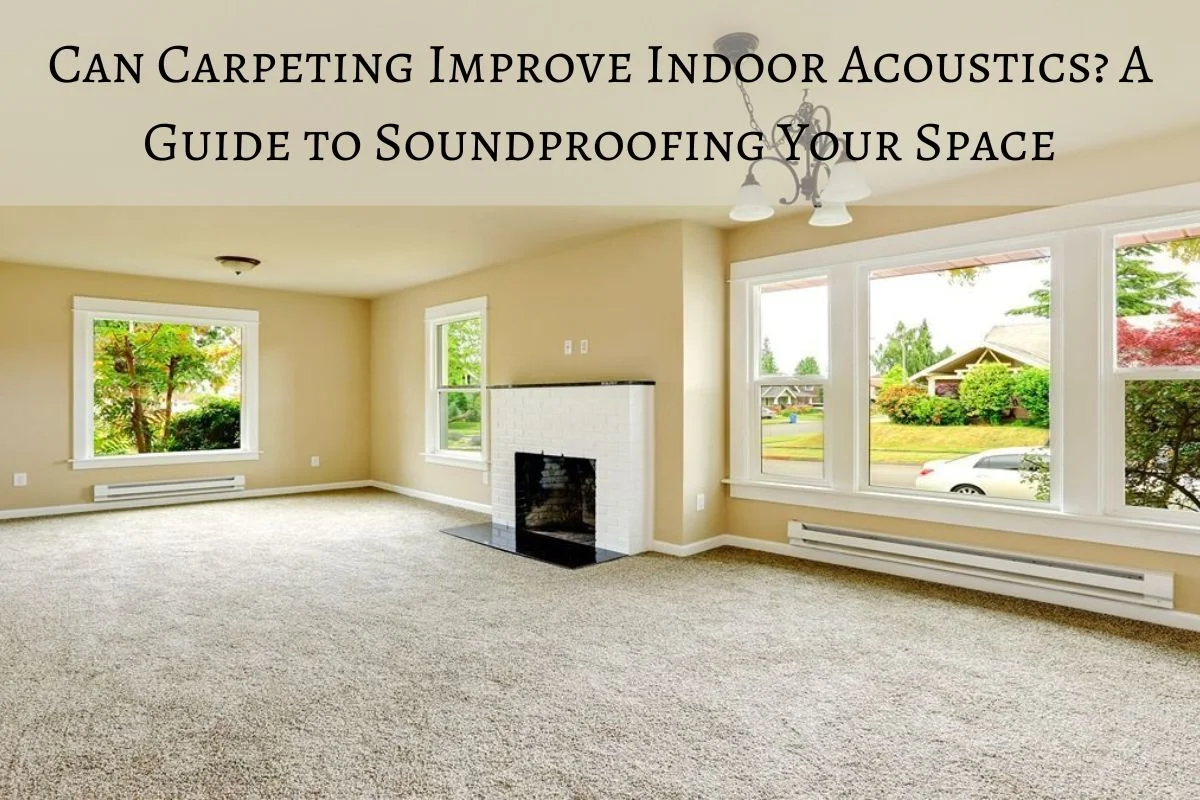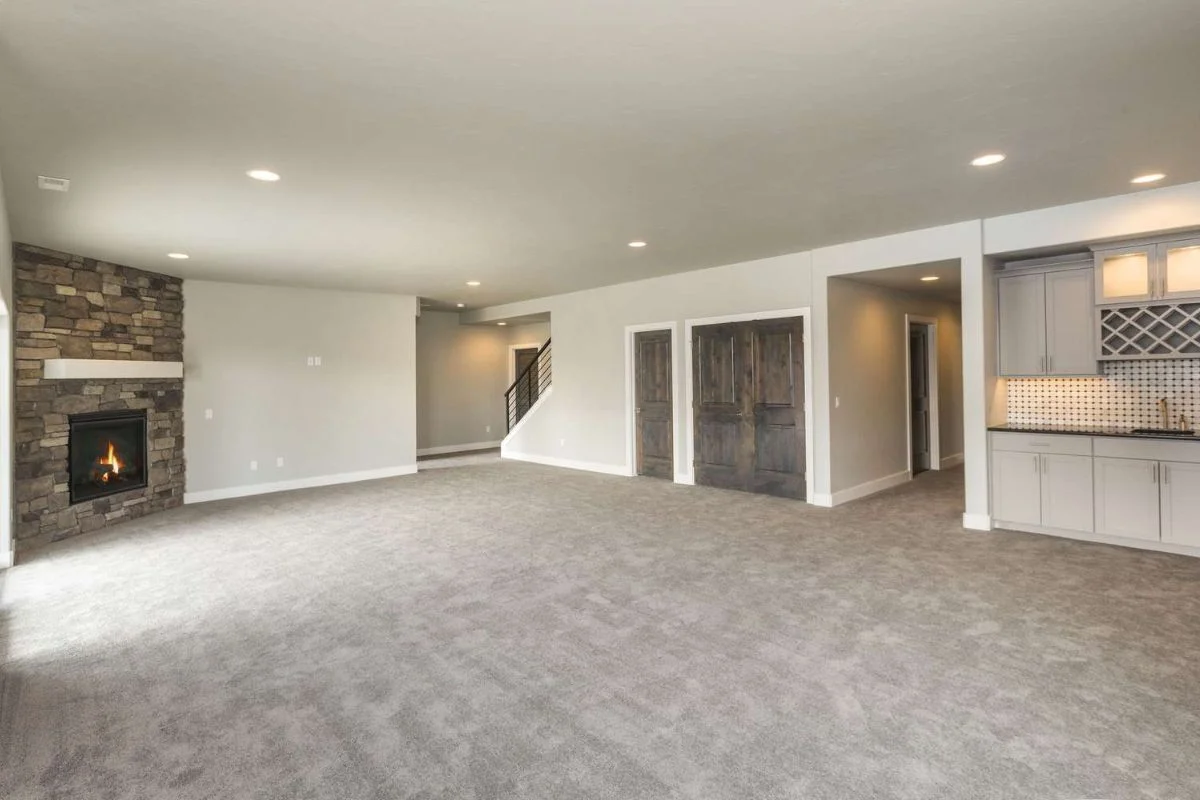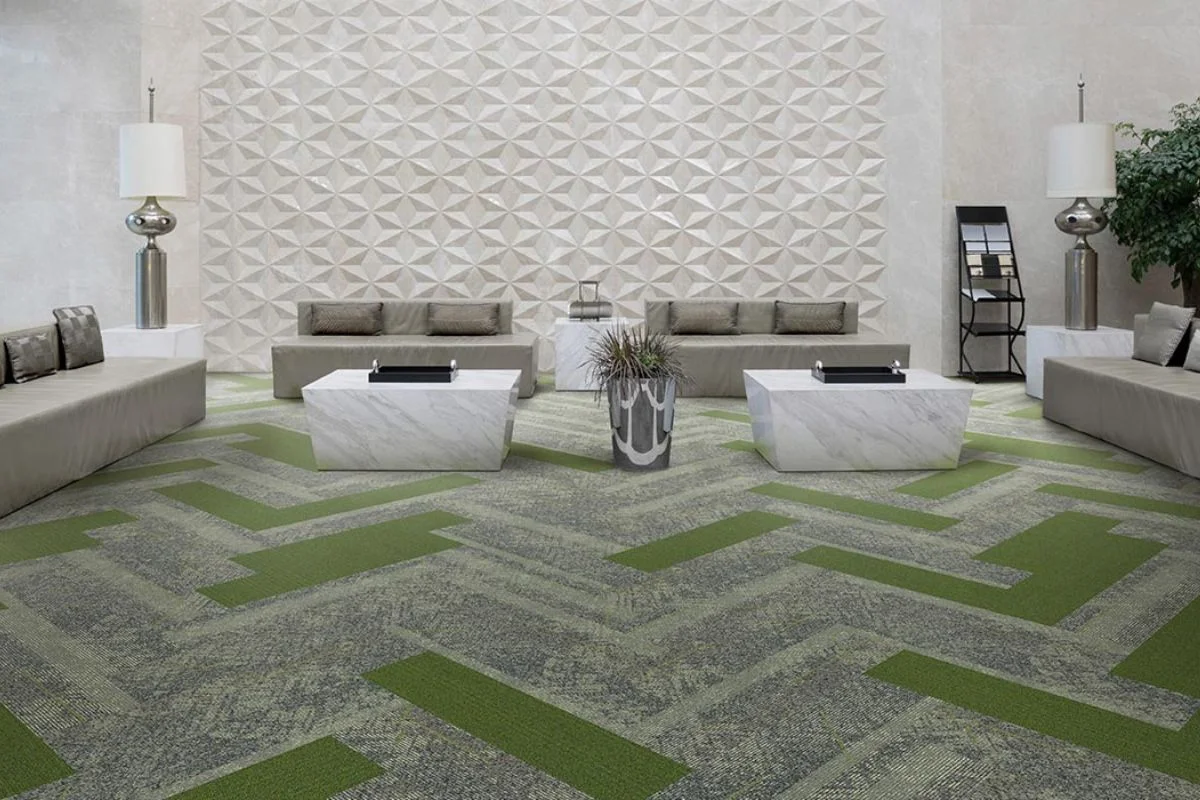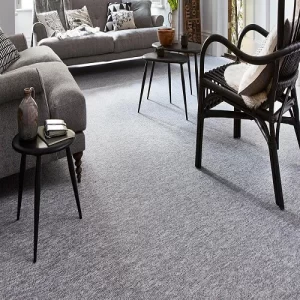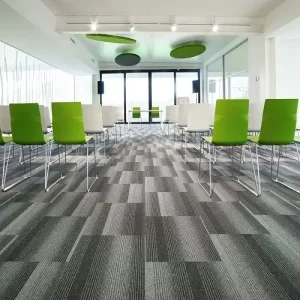When it comes to creating a peaceful, comfortable home, soundproofing is one of those details that can make all the difference. Imagine being able to enjoy a movie without the sounds of the busy street outside, or to take a call without your footsteps echoing through the room. The good news? Carpeting can be a surprisingly effective solution to many indoor noise issues.
In this guide, we’ll dive into how carpeting not only adds style and warmth to a room but also plays a crucial role in improving indoor acoustics. From absorbing sound to reducing echoes, the right carpet can help transform a noisy space into a tranquil oasis. Whether you’re building a home theater, setting up a workspace, or simply seeking a quieter living environment, this guide will walk you through the key ways carpeting can enhance soundproofing and improve your space’s overall comfort.
How Carpeting Absorbs Sound
Carpeting has an impressive ability to absorb sound thanks to its fiber composition and underlying padding. Unlike hard surfaces, which tend to reflect sound, carpets soak up sound waves, making rooms noticeably quieter. When sound hits carpet fibers, it’s trapped and dissipated, reducing the sharpness and volume of noises like footsteps, voices, and even outside traffic. Additionally, carpet padding adds a second layer of sound absorption, creating a barrier that prevents noise from traveling through floors and walls. This dual-layer soundproofing effect makes carpeting an ideal solution for anyone looking to create a more serene indoor environment.
Reducing Echo and Reverberation
Echoes occur when sound bounces off hard surfaces, creating a lingering effect that makes spaces feel louder and more chaotic. Carpeting reduces this echo by absorbing and dispersing sound, effectively softening the acoustics of a room. In large or open spaces, this can be particularly beneficial, as carpeting helps prevent the buildup of reverberation, which is the prolonged reflection of sound. With less echo and reverberation, conversations become clearer, and background noise is minimized. This improvement is especially valuable in areas like living rooms, offices, and home theaters, where sound quality and clarity are essential.
Carpet Thickness and Padding Options
The thickness of carpet plays a major role in soundproofing: thicker carpets generally absorb more sound. For optimal acoustic control, look for plush or high-pile carpets combined with quality padding. Padding, available in various thicknesses and materials, acts as a secondary soundproofing layer that reduces noise transmission between floors. Options like memory foam or rubber-based pads are particularly effective, as they absorb impact noise from footsteps and other movements. The added density helps dampen both airborne and impact sounds, giving your space a quiet, cushioned feel that can enhance overall comfort and tranquility.
Carpeting for Different Rooms: Where It Makes the Biggest Impact
Certain rooms benefit more from carpeting’s soundproofing qualities than others. In high-activity spaces like living rooms, family rooms, and hallways, carpeting helps reduce noise from foot traffic and conversation. Bedrooms also benefit from carpeting, as it creates a peaceful, restful environment by muffling sounds and adding warmth. For home theaters or music rooms, wall-to-wall carpet is practically essential, as it controls acoustics and prevents sound from disturbing other areas. Offices benefit too, with reduced echo making phone calls and online meetings clearer. Understanding where carpeting works best can help you maximize soundproofing throughout your home.
Choosing the Right Carpet Material for Soundproofing
Different carpet materials offer different levels of soundproofing. Wool, for instance, is a top performer for sound absorption due to its dense, natural fibers. Nylon is another excellent choice, as it is both durable and effective at muffling sound, making it ideal for high-traffic areas. Polyester, while not as resilient as wool or nylon, is affordable and provides adequate soundproofing for low-traffic spaces. Olefin (polypropylene) is resistant to stains and moisture but is less sound-absorbent. Selecting the right material based on your soundproofing needs and room usage ensures that you get both noise control and durability.
Wall-to-Wall Carpet vs. Area Rugs for Soundproofing
Wall-to-wall carpet offers the most comprehensive soundproofing, covering the entire floor and significantly reducing noise. However, area rugs can also provide a degree of sound absorption without full carpet installation. By strategically placing area rugs in high-traffic areas or rooms with hard flooring, you can minimize echo and improve acoustics. Layering rugs over existing flooring or carpeting can further enhance sound absorption, especially in open-plan spaces. Area rugs are an ideal choice for renters or anyone on a budget who still wants to reduce noise in specific rooms or high-noise zones.
Carpet as an Insulator: Impact on Both Sound and Temperature
Carpeting not only dampens sound but also serves as an excellent thermal insulator. During colder months, carpets help retain heat, reducing energy costs and making rooms feel cozier. The insulating properties of carpet also add to its soundproofing effect, as it prevents sound waves from passing through the floor. This dual benefit means that carpeting can enhance both the comfort and tranquility of your space, making it a popular choice for bedrooms, living rooms, and other areas where warmth and quiet are desired. By choosing carpeting, you’re creating a space that feels both inviting and acoustically balanced.
Layering Techniques for Enhanced Soundproofing
Layering is a simple yet effective way to boost soundproofing. For example, placing an area rug on top of wall-to-wall carpet adds an extra layer of sound absorption. In rooms with hardwood or tile, adding thick area rugs or layering multiple rugs can make a significant difference in reducing echo and noise. You can also use carpet tiles, which allow for customizable coverage and easy replacement. When combined with other soundproofing solutions—like curtains, wall panels, and acoustic underlay—layering provides a highly effective, versatile way to create a quieter and more comfortable environment.
Maintenance and Longevity of Soundproofing Carpets
Maintaining your carpet is key to ensuring its soundproofing benefits last. Regular vacuuming and deep cleaning prevent the buildup of dirt and debris, which can reduce a carpet’s ability to absorb sound over time. Additionally, wear and tear, particularly in high-traffic areas, can lessen the carpet’s thickness and effectiveness. Consider rotating area rugs and replacing worn-out padding when necessary to maintain the carpet’s acoustic benefits. With proper care, carpets can retain their soundproofing qualities and continue providing a peaceful environment for years, making maintenance an essential part of optimizing your indoor acoustics.
Budget-Friendly Carpet Soundproofing Options
Soundproofing with carpet doesn’t have to break the bank. For budget-friendly options, consider using area rugs, which are easy to place and replace as needed. Carpet tiles are another economical choice that allows for custom coverage without the expense of wall-to-wall installation. Opting for medium-pile or lower-cost synthetic carpets can also provide a reasonable level of sound absorption. Look for carpet remnants, sales, or second-hand rugs as well, which can offer cost-effective soundproofing without compromising style. With these budget-friendly approaches, you can enjoy the acoustic benefits of carpeting in your home without a large investment.
Conclusion
Carpeting is more than just a decorative or warming element in your home; it’s a practical solution for reducing unwanted noise and creating a calm, comfortable environment. By absorbing sound, minimizing echo, and even insulating against temperature changes, carpeting plays a key role in enhancing indoor acoustics. With options like thick carpet padding, layered rugs, and material choices tailored for different rooms, you can strategically use carpeting to soundproof your space without the need for extensive renovations.

